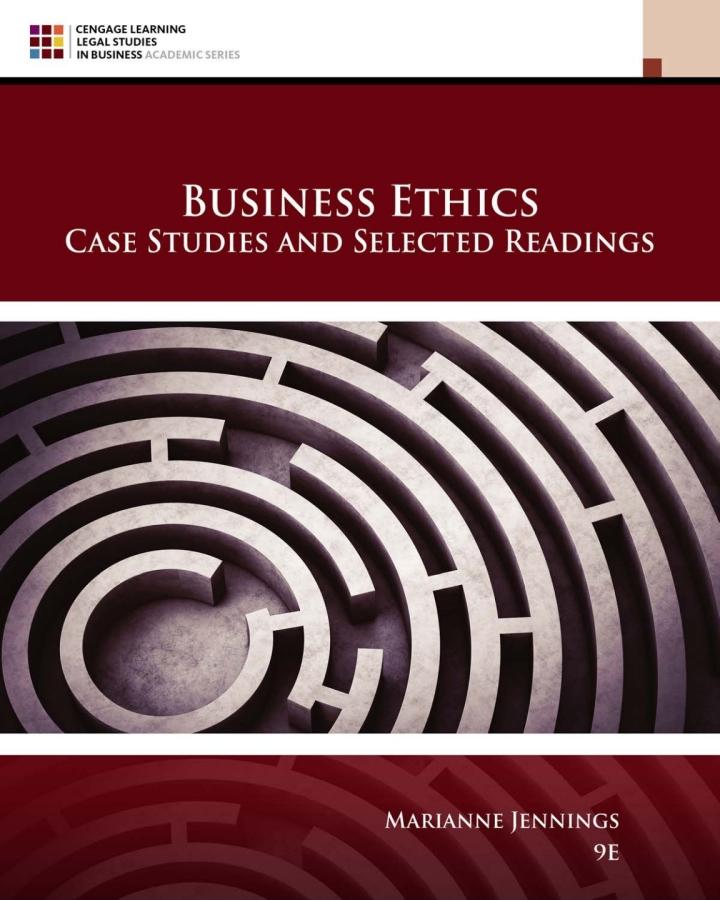NLC issued a report that Liz Claiborne, Walmart, Ann Taylor, Esprit, Ralph Lauren, JCPenney, and Kmart were
Question:
NLC issued a report that Liz Claiborne, Walmart, Ann Taylor, Esprit, Ralph Lauren, JCPenney, and Kmart were using subcontractors in China that use Chinese women (between the ages of 17 and 25) to work 60 to 90 hours per week for as little as 13 to 23 cents per hour. According to the 1998 report, Chinese subcontractors do not pay overtime, and they house the workers in crowded dormitories, feed them a poor diet, and operate unsafe factories. \({ }^{18}\) The NLC continued its work over the next decade with boycotts and public reports, but it was in 2012, when the NLC issued several reports on international labor conditions, that worldwide attention, particularly on college campuses, once again emerged to draw attention to international labor conditions. The report contained the following information: Auto workers in Central America are paid 99 cents per hour; Chinese factory workers earn between 99 cents and \(\$ 1.35\) per hour and work 12 - to 14 -hour days with no set day off, with many scheduled for seven-day workweeks, for overtime rates of 37 hours per week, or \(345 \%\) over the Chinese legal maximum hours per week. China shipped over \(\$ 23\) billion in toys and sporting goods that were manufactured in 8,000 factories in that country. According to the 2012 report, Chinese subcontractors do not pay overtime, and still house the workers in crowded dormitories, feed them a poor diet, and operate unsafe factories. \({ }^{19}\) In 2013, the issues in the report were evidenced by a series of fires in Chinese factories that were producing clothes for European labels Sol's and Fox \& Scott. In addition, there were factory collapses in India, China, and Bangladesh in 2013-2015 that revealed safety issues beyond what the report documented.
However, U.S. companies' investments in foreign manufacturing in major developing nations like China, Indonesia, and Mexico have produced some positive effects. In Hong Kong, Singapore, South Korea, and Taiwan, where plants make apparel, toys, shoes, and wigs, national incomes have risen from \(10 \%\) to \(40 \%\) of American incomes since 1996. In Indonesia, since the introduction of U.S. plants and subcontractors, the proportion of malnourished children in the country has gone from one-half to one-third. \({ }^{25}\) However, as the economics of international production have changed and wages have increased in foreign production, the issue of safety of the factories has risen to the forefront (as noted above). The May 2013 collapse of a clothing factory in Bangladesh resulted in the deaths of 617 workers there, and a fire in another factory there resulted in the deaths of 112 workers. In the case of the building collapse, there were five factories operating in a single building that had not been approved for industrial use. Eighty percent of Bangladesh's exports are to the United States and Europe and are comprised of textiles. These exports are \(10 \%\) of the country's GDP. The collapsed factory produced clothing for JCPenney, Walmart, and Benetton. Both the companies and U.S. officials have been concerned about the safety of the factories in Bangladesh. The United States has been considering revoking the country's most favored nation trade status, but did not do so just prior to the collapse, based on assurances that government officials would increase both standards and inspections. In 2011, a group of companies that used production facilities in Bangladesh had considered joint sponsorship of independent inspections in Bangladesh, but did not reach agreement because of the cost of \(\$ 500,000\) for the paid inspections. Clothing is still most likely to be produced in China where Zengcheng is known as the "Blue Jeans Capital of the World." \({ }^{26}\)...................
Discussion Questions
1. One executive noted, "We're damned if we do because we exploit. We're damned if we don't because these foreign economies don't develop. Who's to know what's right?" How does this observation compare with the changes and experiences of the companies covered in the case?
2. Would you employ a 12 -year-old in one of your factories if it were legal to do so?
3. Would you limit hours and require a minimum wage even if it were not legally mandated?
4. Would you work to provide educational opportunities for these child laborers?
5. Why do you think the public seizes on the Nike issues, but not the Apple issues? That is, there is no boycott of Apple products despite continuing labor issues emerging within the company's international supply chain. Why?
Step by Step Answer:

Business Ethics Case Studies And Selected Readings
ISBN: 9780357453865
9th Edition
Authors: Marianne M. Jennings





